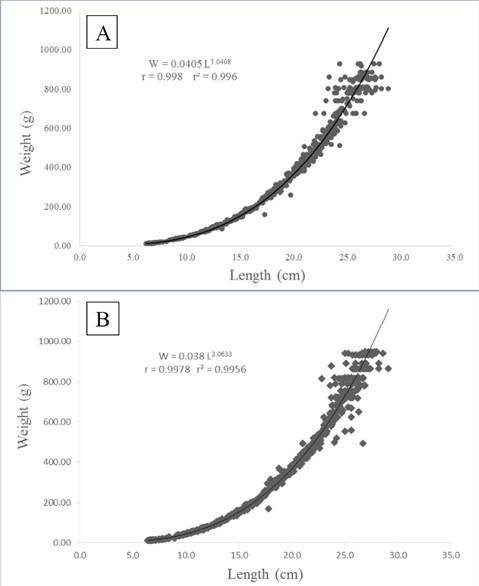ABSTRACT:
The growth of cachama hybrids, cachamoto (Colossoma macropomum ♀ x Piaractus brachypomus ♂) and cachamay (P. brachypomus ♀ x C. macropomum ♂) was compared for 154 days to determine which showed the better productivity. The experiment was carried out in three earth ponds, each divided transversely with a plastic net, yielding six experimental units. Juveniles of cachamoto of 12.95±2.43g and 6.75±0.42cm and cachamay of 16.65±3.64g and 7.41±0.62cm were distributed in each sub-tank of 240m2 at a density of 0.5 fish m-2. Fish were fed twice daily except on days when their weight and length, and the physical and chemical parameters of the water were measured. The following productive variables were evaluated: growth in weight and length, daily weight gain, daily feed intake, apparent feed conversion, specific growth rate, condition factor, productivity and the cost/benefit relationship. None of the analyzed variables presented statistical difference between treatments. Physical and chemical parameters of the water remained within the recommended values for cachama, and survival was 100%. Based on the results obtained, it can be concluded that cachama reciprocal hybrids present a similar productive behavior, so that it is indifferent which one is chosen to be raised under the conditions evaluated.
Key words:
black pacu; pirapitinga; fish culture; productivity; cost/benefit relationship

 Thumbnail
Thumbnail
